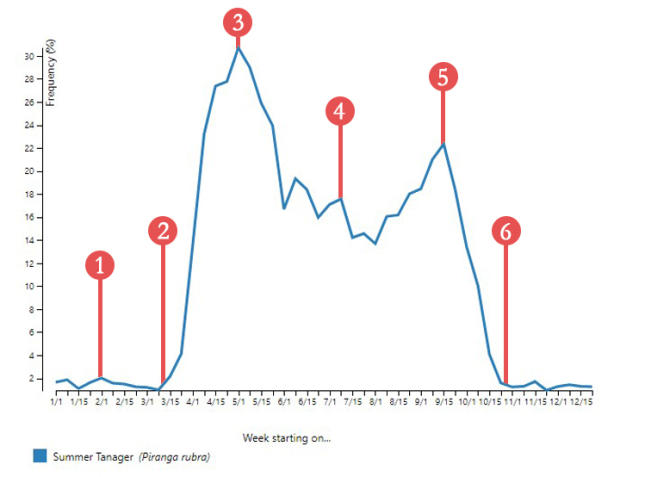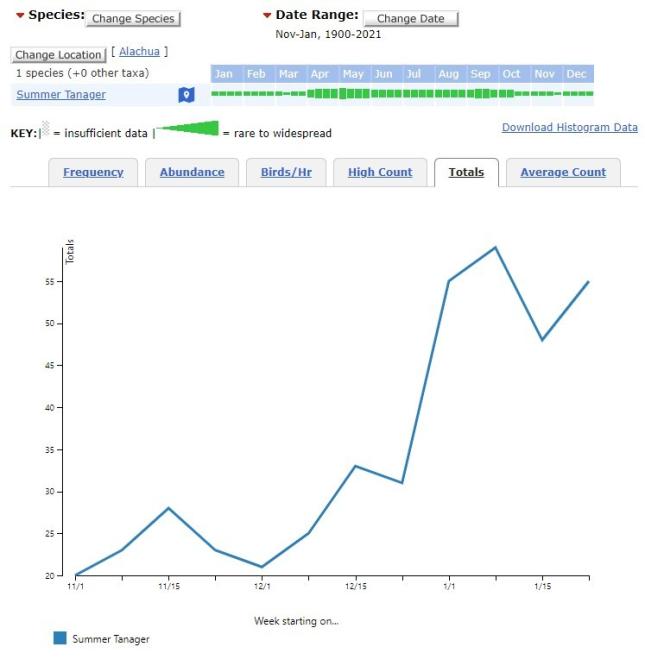All you need to know about the status and distribution of Summer Tanagers in Alachua Co., FL

Follow along from point 1 to point 6 as I explain how this chart shows you everything you need to know about the status and distribution of the Summer Tanager (SUTA) in Alachua County, FL over the course of a year.
Point 1
Note that there is a small amount of activity throughout the winter but that it is persistent. SUTA has historically been considered a full migrant with a history of overwintering in very small numbers along the coast in S. FL but that pattern seems to have changed within the last 20 years. Prior to that, any winter sighting of SUTA in Alachua County was considered noteworthy to the point that observations needed convincing documentation in order to be accepted into the permanent ornithological database. Now, the number of SUTA in the county on any given winter day seems to be anywhere between a few and several dozen.
Point 2
In spite of the apparent increase in overwintering, the vast majority of migrant SUTA spends its time between the Antilles and Northern Andes and begins to return to North America in the second week of March. Returning birds can either move through quickly to points further north or begin to set up territory for breeding season. SUTA males sing as soon as they arrive. Some females sing but "song is a poor rendition of male song: slurred..and short overall in duration." (birdsoftheworld.org/bow/species/sumtan/cur/sounds) .
Point 3
Peak of historical annual frequency of SUTA in Alachua Co., FL. Feeder activity is regular by this point with Bark Butter (spreadable suet) being the most preferred food, by far. Migration is continuing on the shoulder of point 3 in the graph as birds continue to leave Central America into the third week of May. Feeder activity increases as breeding season begins in late May.
Point 4
Spring migration ended near the last week of May and so the numbers of overall observations have dropped. However, feeder activity can actually pick up as resident, breeding SUTA seek more and more food while raising young on the nest and as young birds begin to fledge and forage independently, often also at feeders. The two humps on the graph at Point 4 are likely attributable to breeding activity on the part of adult birds and fledging activity on the part of young birds.
Point 5
The majority of SUTA returns to overwintering grounds on a migration that begins in the first week of August and peaks in Alachua County in the second and third weeks of September.
Point 6
The overwintering phase for SUTA begins in Alachua County. A different chart of the data of overwintering SUTA shows the total number of birds reported on a weekly basis between the dates of November 1 and March 1. Note that some of these totals comprise reports submitted daily from the same location.

